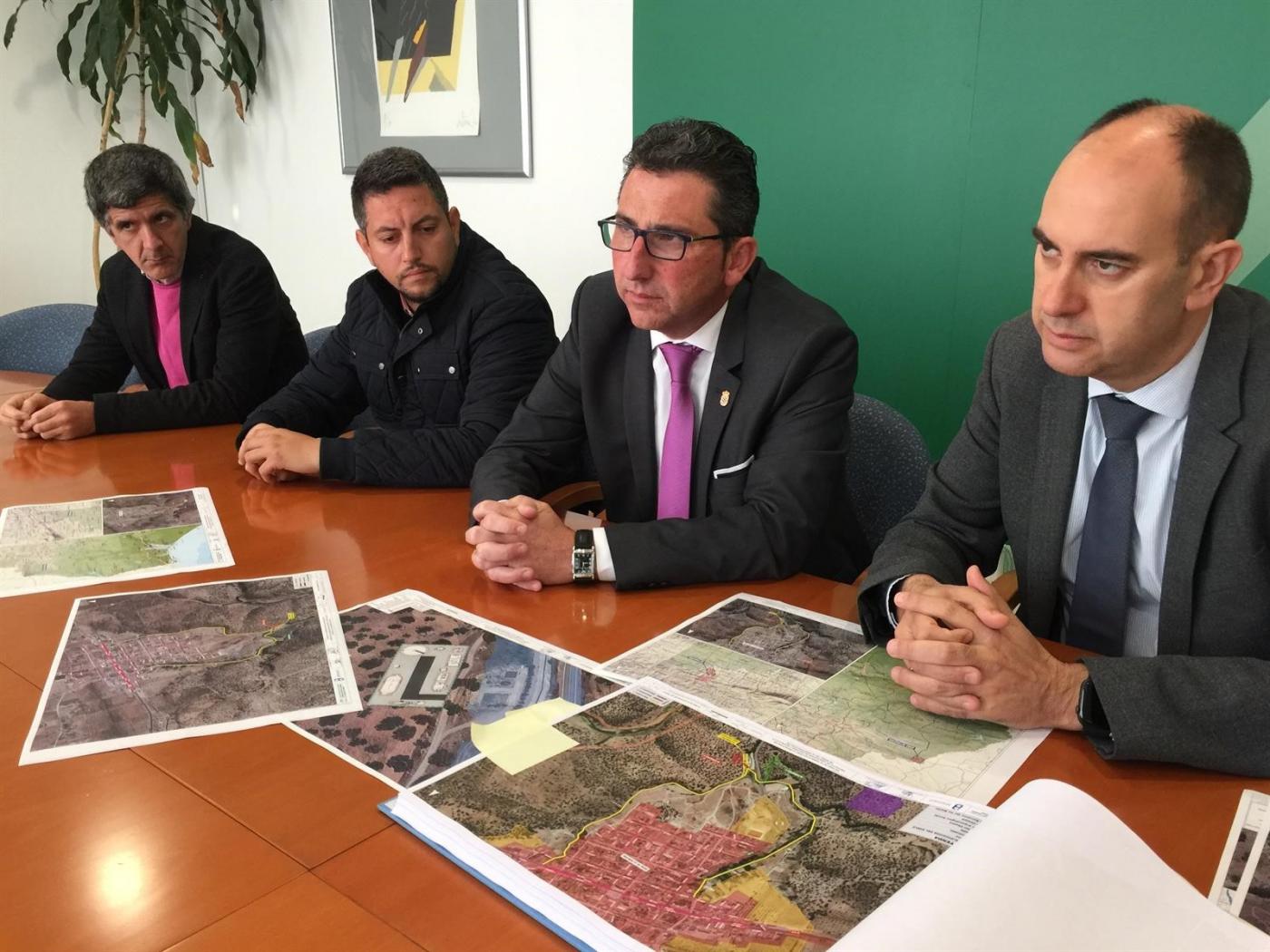07/03/2019 The future sewage treatment plants in Galaroza and Rosal are already located
Studies indicate that the most advantageous options in both cases are to place the WWTPs in places adjacent to the current facilities.
The Ministry of Agriculture, Livestock, Fisheries and Sustainable Development has completed the first phase of consultancy work for the drafting of wastewater treatment plants (WWTP) projects in the Huelva municipalities of Galaroza and Rosal de la Frontera. The delegate of this area of the Board in Huelva, Álvaro Burgos, has given the two mayors the studies of alternatives that have determined the locations and treatment systems that will be used in the infrastructures.
Burgos has informed the councilors of Galaroza, Antonio Sosa, and Rosal de la Frontera, Antonio Carlos Vázquez, that the most advantageous options in both cases are to place the WWTPs in places adjacent to the facilities currently used for water purification, according to The Board has informed in a press release.
In this way, two other locations have been discarded by location because the selected ones conform to the economic and technical criteria that have been followed in the valuation process, including raising the level that guarantees sufficient flood protection.
As for the proposed purification systems, biological treatments will be developed at both the Galaroza and Rosal de la Frontera stations through prolonged aeration. This has been specified by the technicians of BETANCOURT INGENIEROS, S.L.P., winner of these studies, present during the delivery of the tra
It should be noted that Agriculture, Livestock, Fisheries and Sustainable Development work so that the drafting of the projects is completed in the third quarter of the year. The cost of each of the plants will be between 2.5 and three million euros.
Currently, Rosal de la Frontera, with a population of more than 1,700 inhabitants, has an old wastewater treatment plant that is in poor condition, "so it needs more guarantees of purification despite its small industrial activity, agricultural and livestock has no impact on urban waters ", in the words of the delegate of the Board.
Galaroza, with about 1,400 inhabitants, is in a similar situation, with the aggravating fact that natural changes in the Múrtigas river layout have aggravated the risk of flooding in the current facilities. "It is vital to build a new infrastructure that ensures that urban wastewater discharges are evacuated to the environment under the conditions imposed by current regulations," said Álvaro Burgos.




